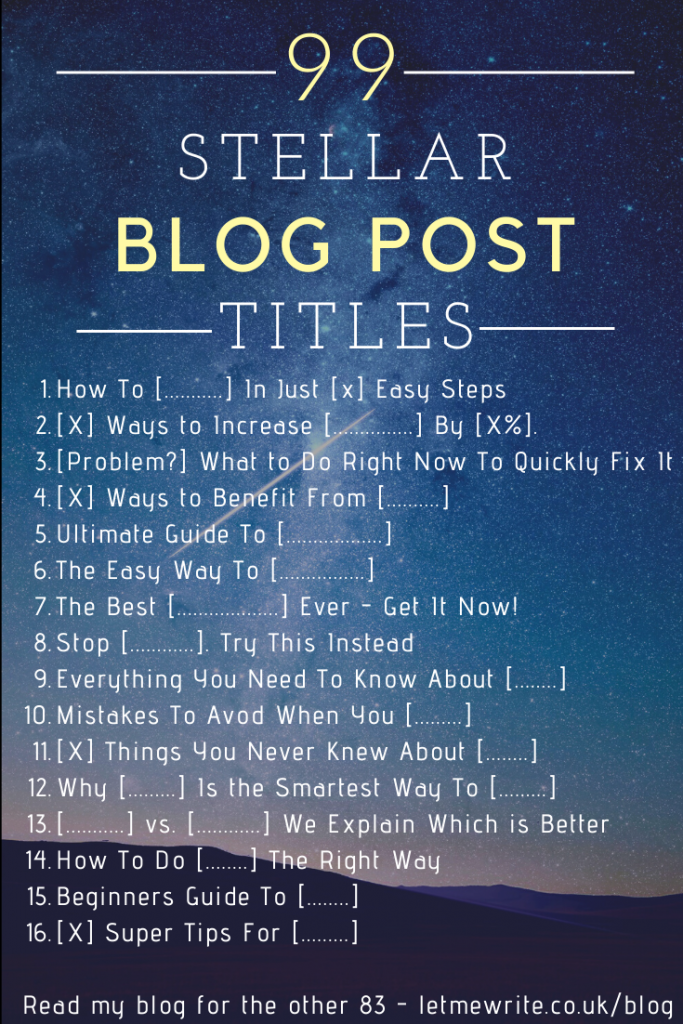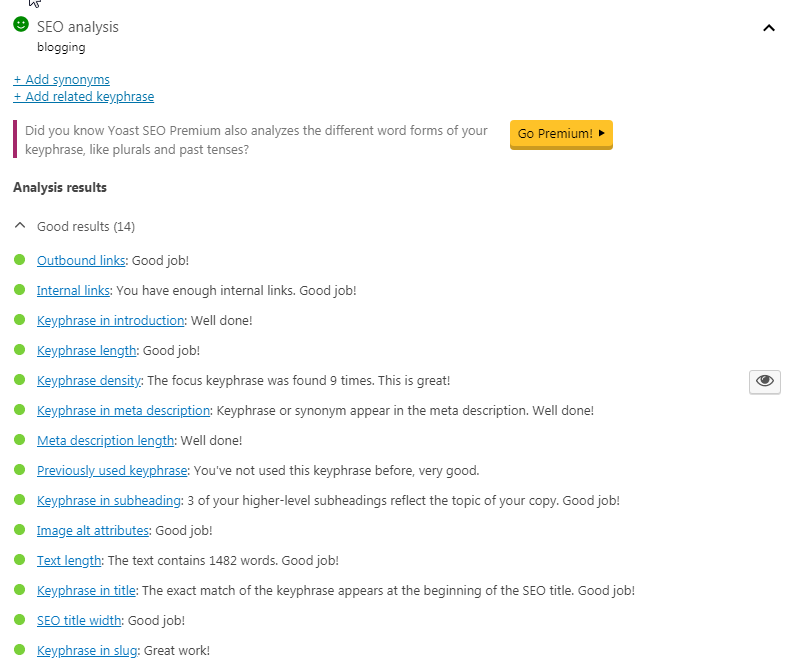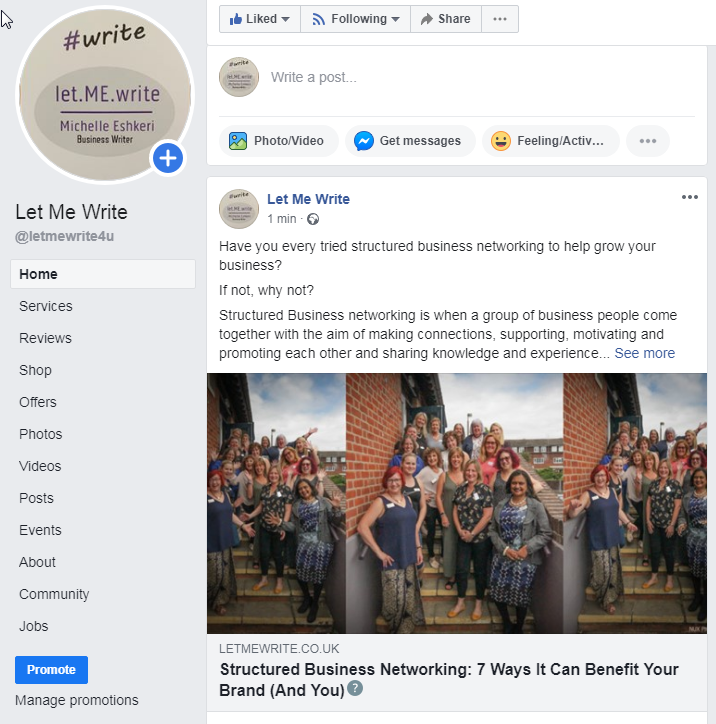Blogging habits to get into
1. Blogging Consistently
One of the most important factors in blogging -how well a blog gains traffic and followers – is down to how often new and engaging content is posted. A single blog can gain a lot of likes, comments and shares, sending new visitors to your website if it hits that sweet spot of meeting a need in its audience at just the right time. However, your audience will only return time and again if you continue to deliver high quality content on a regular basis.
Head in hands time for a lot of business owners.
You may be thinking, “How on earth do I find time to blog on a regular basis when I’m busy working in my business?”
But, don’t forget, regular is not necessarily the same as frequent.
Regular from a time point of view means something happens at evenly spaced out intervals. For example, weekly, fortnightly or monthly. If you are blogging to a regular timetable, it sets up an expectation in your audience about when new content will be available.
Frequent, on the other hand, suggests something that happens with fairly short intervals in between. From a blogger’s perspective, this might suggest weekly or even more often than that.
That’s the head in hands moment.

Let’s face it, not many of us have time for writing more than once a week.
Hold on, there’s good news!
Less is more
A high-quality, longer piece of content that really delivers value to your client is much more likely to help you increase your blog subscribers because that piece can act as “evergreen content”. Evergreen content is the cornerstone of your blog and should be referred to as often as possible. Other blogs should refer back to it as well as social media posts on whichever platforms are most appropriate for your audience.
Having a regular blog posting schedule helps you to plan your social media posts. A schedule enables you to think more strategically about how your brand is represented. It also helps you take advantage of seasonal tie-ins where appropriate.
Of course, there’s always the option to outsource your blogging to a copywriter. They can get to know your business, your ethos, products/services, and your customers. Find a copywriter who understands how to optimise for search engines (SEO) as well as someone who can write in your voice. Some copywriters offer blog packages so you can get a regular stream of fresh content to your blog and on social media.
2. A Click Worthy Title
You want to read something useful or entertaining or best of all, useful and entertaining.
So many blogs, so little time.
How do you decide which blogs to read and which ones to scroll on past?
To get the click, your blog has to grab the reader’s attention quickly. Your blog is competing with around 4 million other blogs per day, so a title clearly explains the benefit of reading is vital. There are numerous blogs just on the subject of writing winning blog titles. Just scan Pinterest if you are looking for blog title ideas.

It’s reasonably simple though – tell the reader how reading the blog will make their life better OR how things will get worse if they don’t read the blog.
So what sort of titles get the most clicks?
Humans like lists, instructions, and how-to posts. We are all time-poor and if we can quickly find a great summary of how to do something or a checklist to help us manage a task, we jump at it.
Here’s the title of the very first blog post I ever wrote:
Pregnancy massage – the benefits
Ok, so it tells the reader what it’s about, but frankly, it’s pretty dull and not really going to wow many readers. What could have been better?
How about:
The 5 Benefits Of Massage That Every Pregnant Woman Should Experience
How To Relieve Pregnancy Aches And Pains With The Best Massage Ever
5 Of The Best Pregnancy Massages In London
The above 3 titles are much more likely to get attention and rank on Google than my original because the reader can see exactly why they should read on.
Tried and tested formats
- How To _______________ To Achieve _______________ In Just ______ Days
- Why This Is The Only Post You Should Read When You Want To _______________.
- 5 Ways to ____________________ For Maximum Success.
- 15 Things You Must Do Now To _______________
- [Ultimate Guide] How to ______________________
- 21 Facts You didn’t Know About ________________
- The Best Checklist Ever For __________________
- 7 Questions You Should Ask Before You______________________
And I could go on, but that’s for another post.
3. Search Engine Optimisation
You know it’s important for successful blogging, but you find it either tedious or confusing (or both). Search Engine Optimisation (SEO) is vital to enable a post, page or site to rank higher on the SERP (search engine results page) than your competitors for the keyword your client is searching on. For the most popular keywords in a given niche, it is harder and harder to rank on page 1, unless you use a water-tight SEO strategy alongside stellar content.
Long gone are the days where a website can rank up just by keyword stuffing. Google is looking for the best content to serve up to its users and as a result longer form tends to rank higher than short posts. However, the most important thing for blogging is valuable content.
After that, you want to make sure that you are formatting your post with the right tags <H1, H2 etc>, title lengths, meta description, and image alt-text. This data helps Google accurately figure out what your post is about. And whether it is a good match for user search. If you fail to complete the basic SEO data, you might as well not bother posting because Google will not pick up your post as relevant.
Google’s SEO algorithm is immensely complex – not even Google employees understand it all! It is currently thought to be a combination of around 200 factors. Clearly, it would be impossible to check every post for all 200 factors – we would never get anything posted. So, sites such as WordPress.org have plug-ins that help bloggers to focus on the most important factors. Personally, I find Yoast the easiest tool for checking how I am doing with my important SEO factors.

4. Stellar Blogging Content
With a massive choice of blogs, what gets you reading right to the last word?
Entertaining and useful content is the key to effective blogging. Blog titles that promise much and deliver little will contribute to a high bounce rate from your site. It’s pretty hard getting users to click in the first place, so when they do, we should work EVEN HARDER to make them stay longer.
What can you give your reader that they cannot get elsewhere?
Many blogs have interesting things to say, but that’s not enough. Your content needs to be tight. Punctuation, spelling and grammar mistakes will hurt your business credibility. A poorly structured blog that rambles all over the place – a stream of consciousness, is likely to lose readers quickly. If they have to work too hard to understand your point, they’re gone and they may not give you a second chance.
5. Graphics
People like their content in bite-sized chunks so it doesn’t look too overwhelming. Paragraphs should generally be no more than 3-4 sentences interspersed with a break. This can be achieved using a line space or better yet, a relevant image that complements the point. Posts that have attractive graphics every 150 or so words tend to perform better according to Neil Patel, but definitely try not to write more than 300 words without popping in an image or other graphic.

Graphics can be relevant photos, fun images, charts or infographics which help to explain your content. Better yet, a short video is even more engaging and will help to increase the user time on your blog. These days, it is easy to make reasonably decent videos yourself, so you do not need to spend a fortune on a videographer if you are on a limited budget. You’ll notice that I haven’t actually posted videos yet – I’m a words person and I don’t like to be in front of the camera – but I am working on it.
6. CTA – otherwise known as Call-To-Action
If you don’t have a clear call to action in your post, your reader may get to the end and wonder, “What was the point of that?”
You are missing a golden opportunity to ask your audience to take another step on their journey with you and it may end up being a one-night stand instead of a long-term relationship. I know what I would rather have with my readers.
At the bare minimum, have a call-to-action at the end of your post. You can ask your reader to comment, like and share your post on social media. Or you can take a more sophisticated approach, with downloadables, email subscriptions and even smart CTAs that present differently depending on who the reader is.
7. Blog distribution
Not much point in spending time blogging if you don’t do a good job on distribution. Of course, your blog will be seen by visitors to the right page on your website, but you need to send it much further afield to really get traction.
First of all, post your blog in full as an article on LinkedIn, as well as in a post linking back to your blog. Also post in relevant LinkedIn groups.
Secondly, post a short excerpt of the blog on Facebook – your page and in relevant groups, with a link back to your blog.
Thirdly, post a short excerpt on Google My Business, with a link back to the blog. Each picture from the blog can also be added as photos on GMB if appropriate.
Lastly, use parts of the blog to create related content for Twitter, Pinterest and Instagram, all with links back to the blog.
Always ask your networks to share your blog to people they know who may be interested.
********************************************************************************************************************************************************************
So, if you follow the above 7 habits with every blog that you write you will improve your blogging and grow your audience. It takes time and effort to create a click-worthy blog.
If you don’t have the time, writing skills or motivation to do this yourself, ask me for help.
Please comment below and tell me your current approach to blogging. What are your pain areas? Can I help relieve your pain?
So, shamelessly, here’s my CTA (call-to-action):
I would be grateful if you could share this blog with at least one Facebook or LinkedIn group that you are in. Many thanks.


